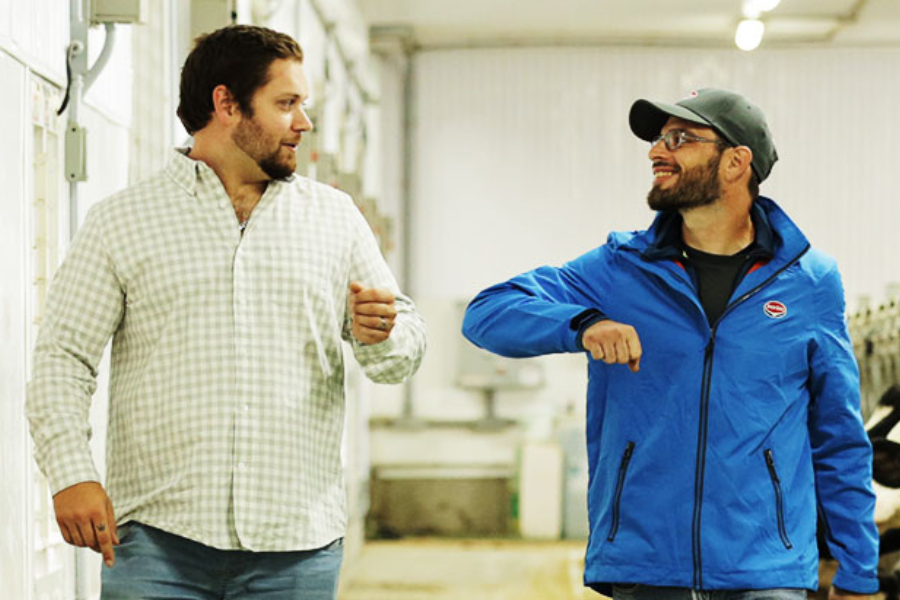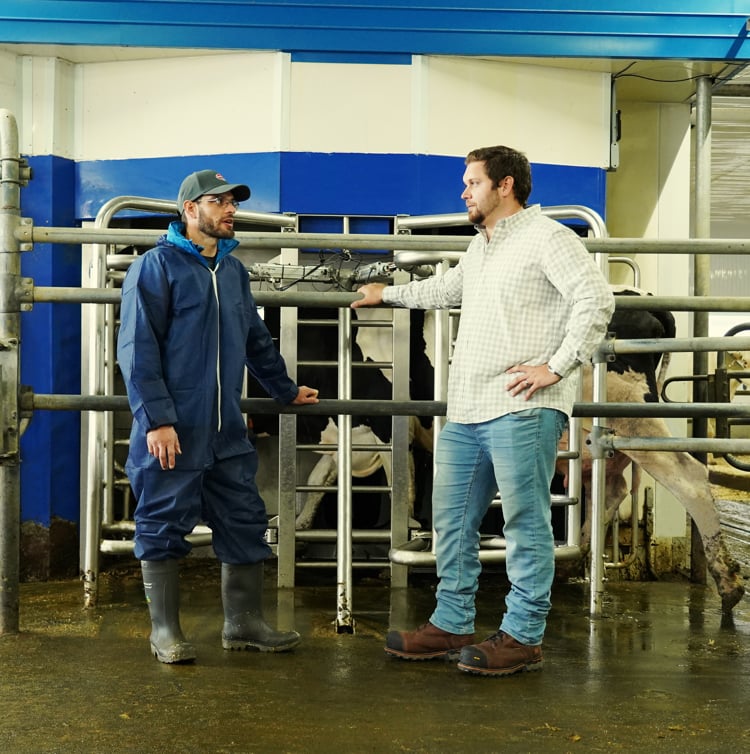The Dairy Nutrition Advisor (DNA) program is more than just nutrition. Our team of Dairy Nutrition Advisors are trained to evaluate the entire farm, ask questions and understand our customers goals.
How the Dairy Nutrition Advisor (DNA) program brings value to your farm

HOW THE DAIRY NUTRITION ADVISOR (DNA) PROGRAM BRINGS VALUE TO YOUR FARM
Bob Reck, Dairy Sales Manager, Southern Alberta, Trouw Nutrition Canada
As a member of the dairy team in Trouw Nutrition Canada, I have the opportunity to take part in the different training modules of our Dairy Nutrition Advisor program. Although I have been working in dairy nutrition for the last 15 years, I am never too old to learn new things.
So what value does this training and certification program bring to the dairy farmer? I feel that after having participated in one of the modules for the training program, I am even better able to help you achieve your goals on farm. How? Let’s explore this further.
Observations, the first part of the program in which I participated, is about looking at everything we can with a trained eye to see if there are opportunities for improvement. This training group was a mixture of new and more experienced reps, allowing experience as well as recent education to be combined with the course material.
The Observations module focuses on feeds, animals, management, facilities, lameness, body condition and manure scoring. Each participant used e-learning to align the basics and expanded their knowledge with classwork and group discussions, allowing for both newer and experienced reps to share information.
The second component of the workshop is two on-farm visits, where we had the opportunity to apply our classroom work and learning. For the first farm visit, we interacted with the producer in a group setting, asking questions and taking notes of different opportunities we saw as ways to make improvements to the farm. We then returned to the classroom to share our observations and come up as a group with a list of recommendations for that specific farm based on industry or regional benchmarks.
The entire exercise was very interesting to be a part of because different people observe things differently. As an example, everyone observed that calves moved from the calf barn to the transition pens were sick and not growing well. Most focused on what they were being fed and how much but the primary problem was where they were located, across from the dry cows, next to the holding area and manure lane.
It also opened my eyes to additional things that I could look for when I am visiting my customers’ operations.
We then visited a second farm where we worked in groups of three and applied what we had learned about making observations during the first farm visit. As a part of the process, each small group completed a walkthrough of the barn, again looking for opportunities where improvements. We then made a presentation of our findings to the group for feedback, discussing benchmarks, potential costs or savings as well as increased income to the producer.
The most beneficial part of going through the training for me was asking the producer and their employees the open-ended questions to encourage discussion. Where do they see bottlenecks on their farm? What opportunities do they believe they could take advantage of to meet their business goals? Are there any differences between my observations as their nutrition representative and what they think the challenges or opportunities are? Trouw Nutrition is primarily a feed company, but we recognize that nutrition cannot fix everything, so we need to have a broader understanding of the best solution for the farm.
